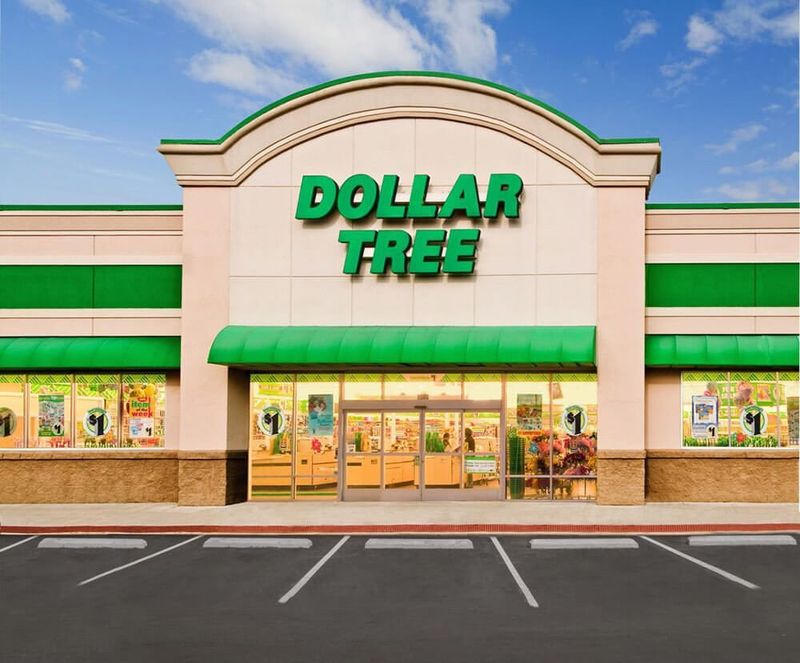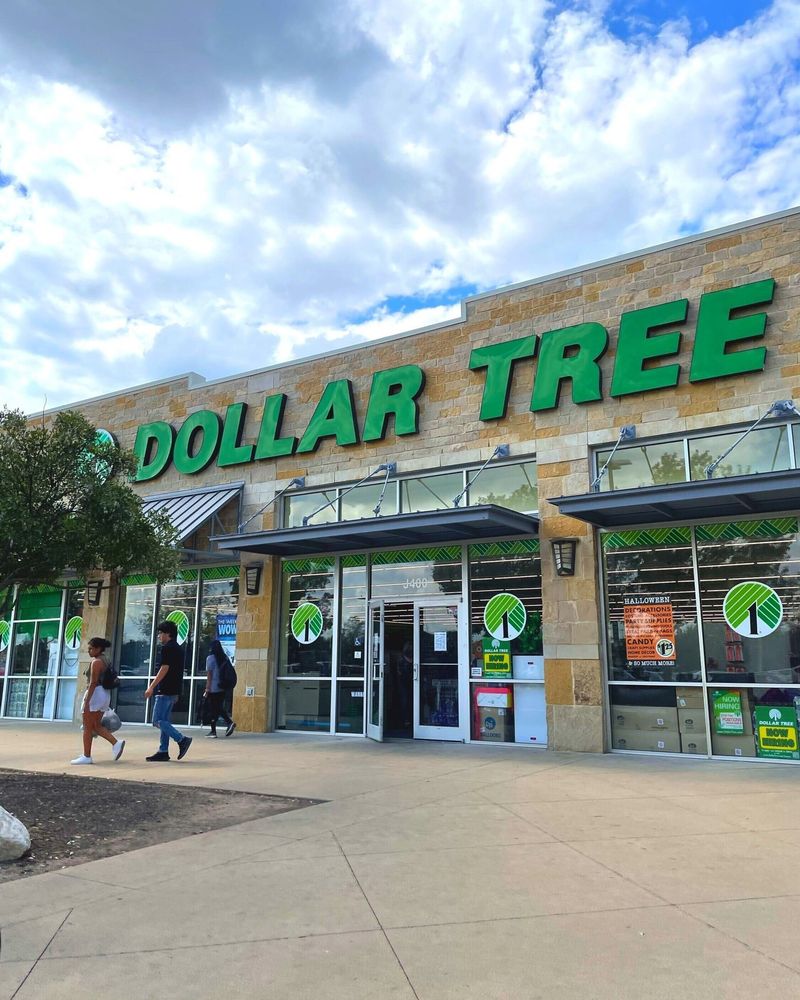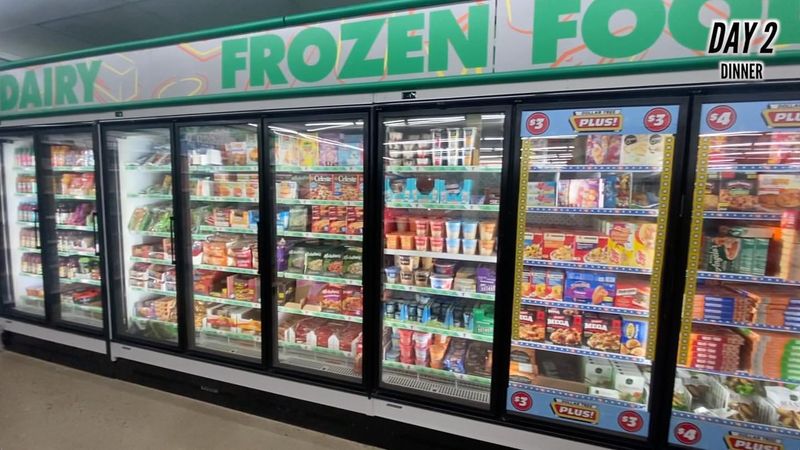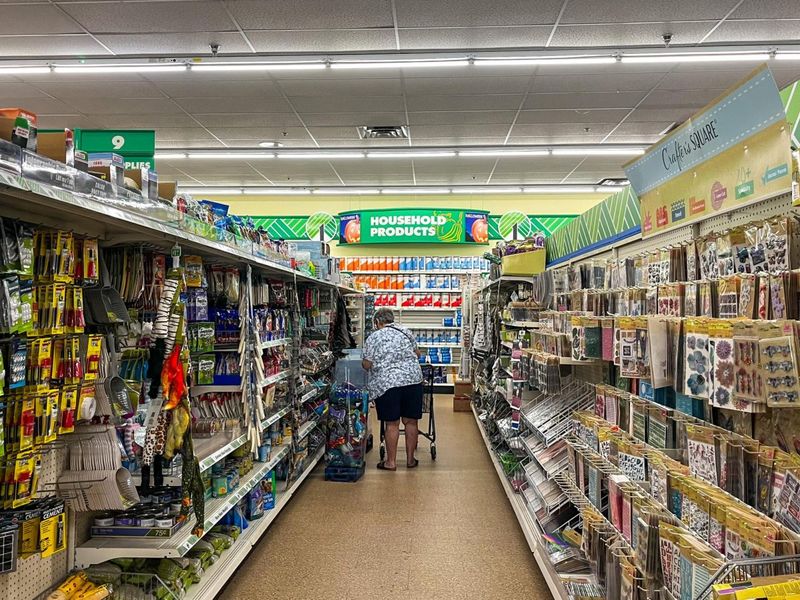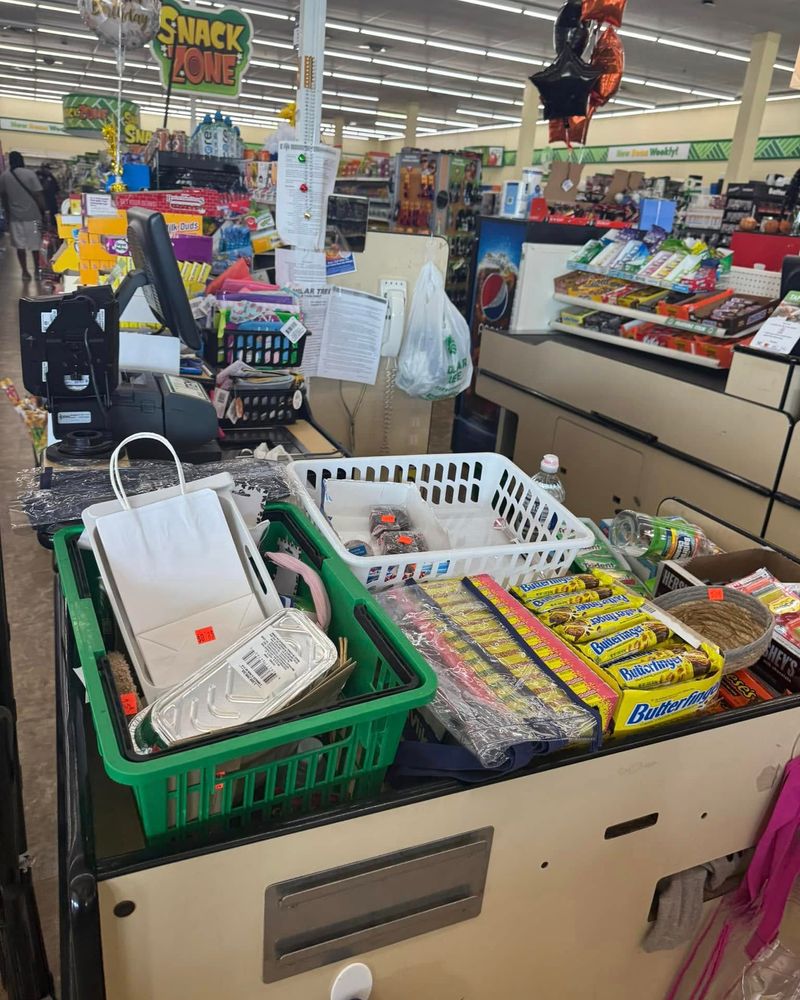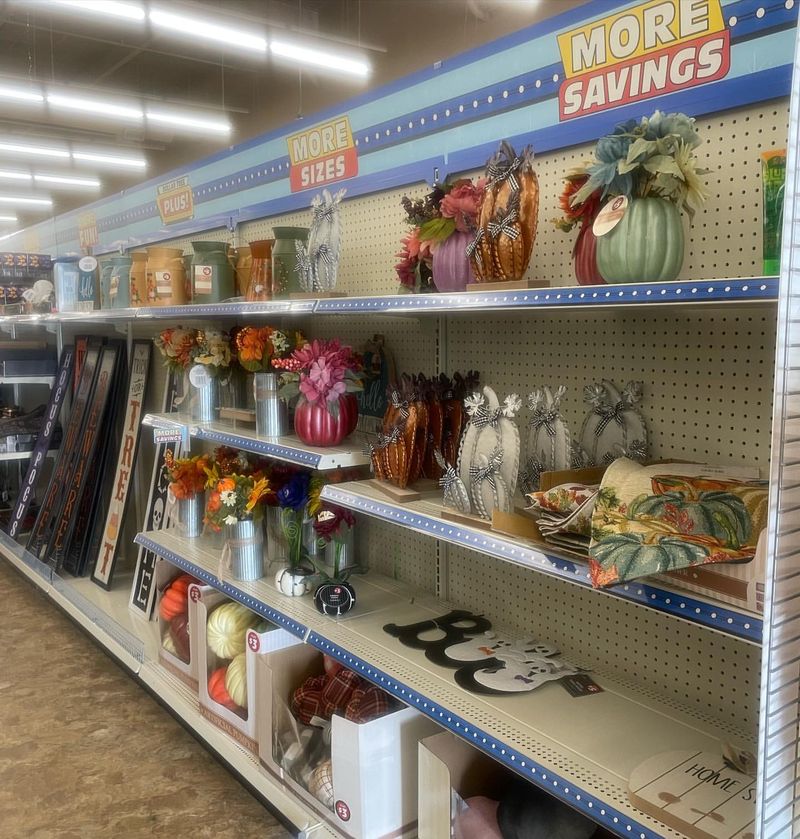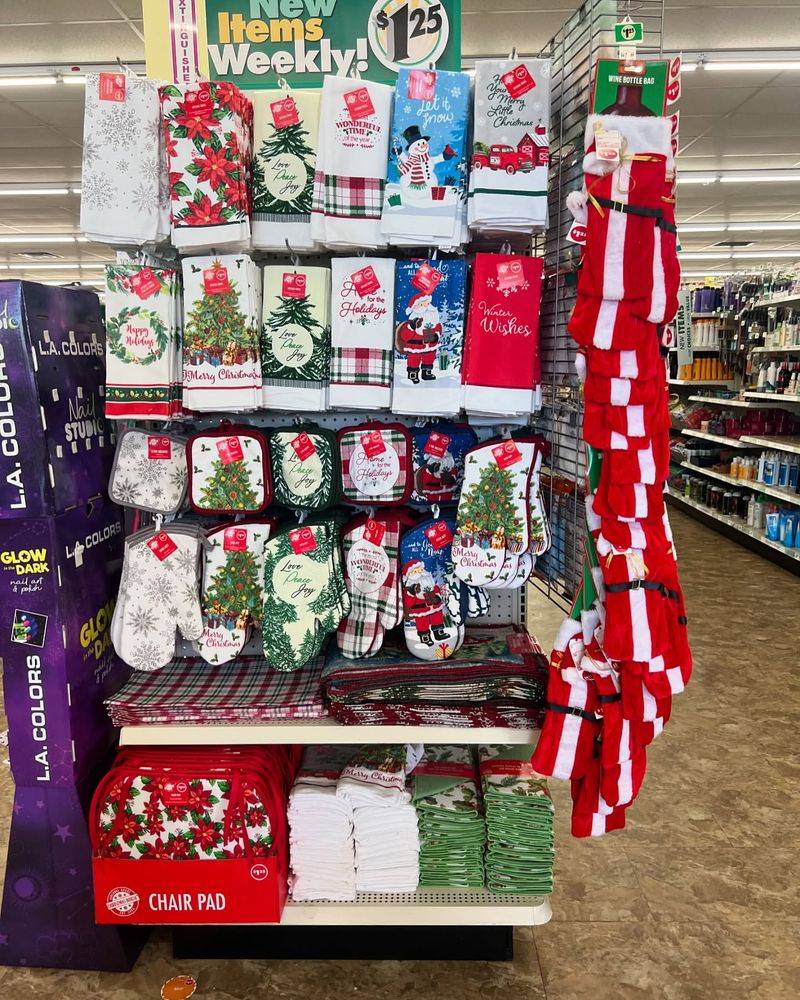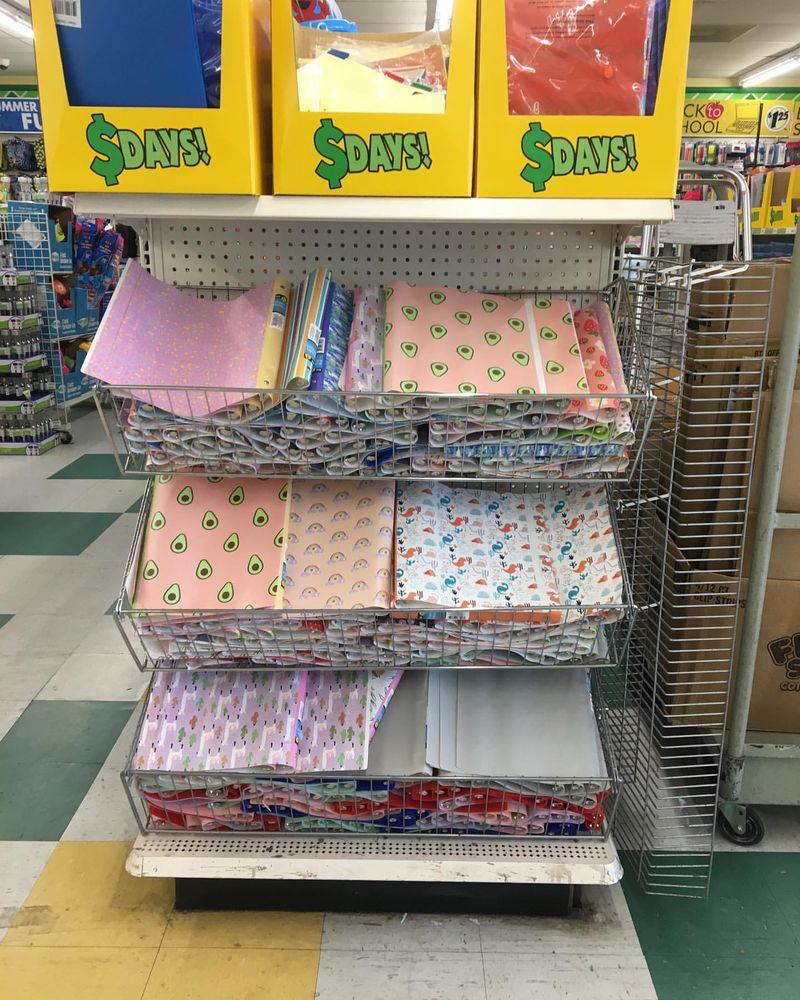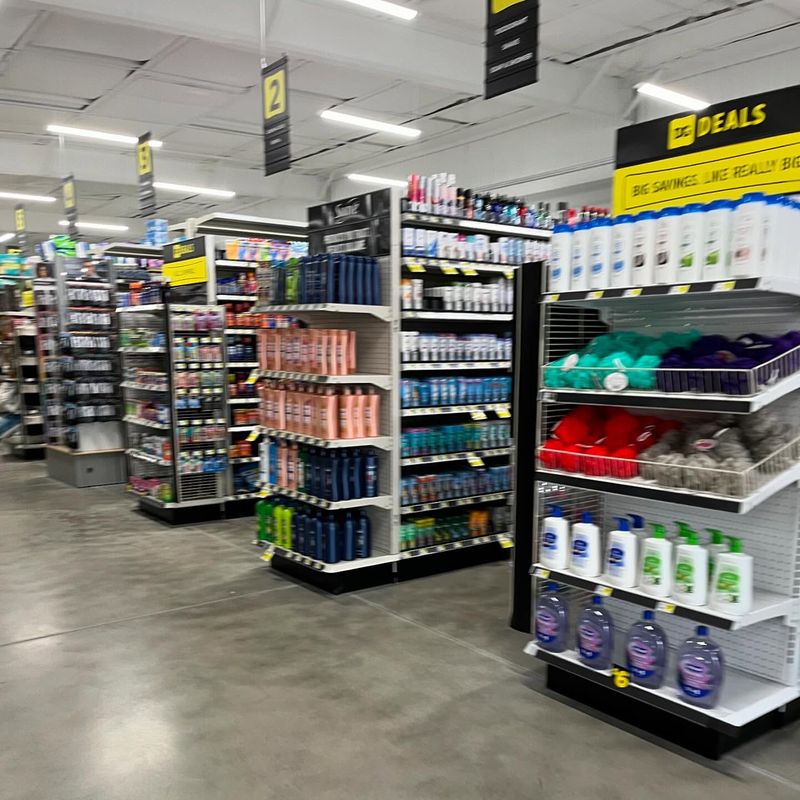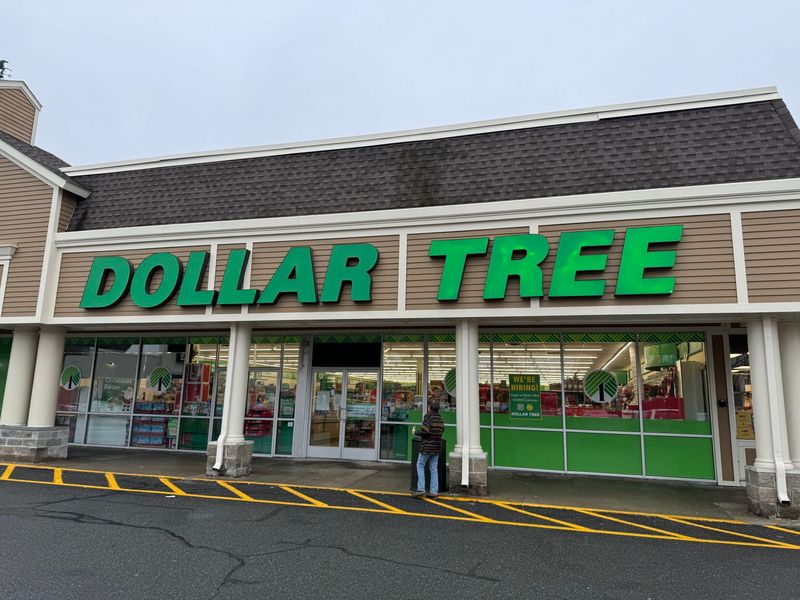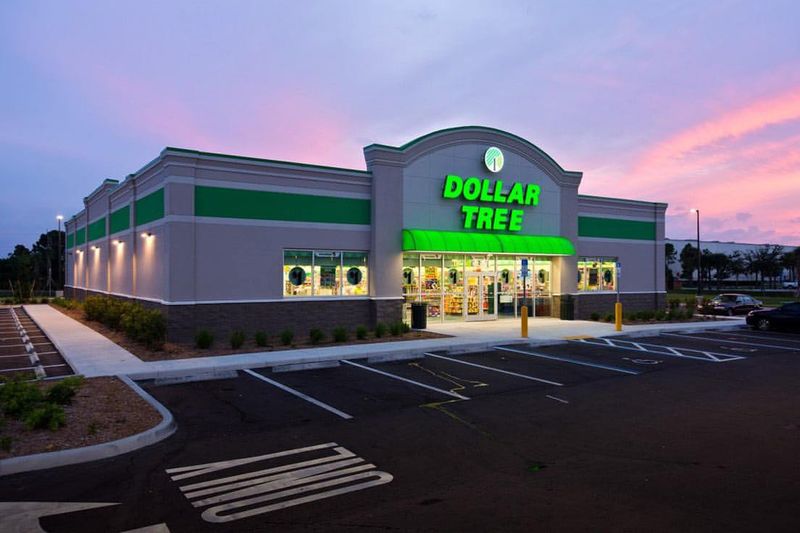Have you ever wondered how dollar stores manage to sell food at such incredibly low prices?
It’s a fascinating mix of strategies and circumstances that make it possible. Let me take you through 25 engaging reasons why dollar stores can offer food at prices that seem too good to be true.
1. Economies Of Scale
Do you know how buying in bulk often saves money? This is the core principle of economies of scale. When dollar stores purchase large quantities of food products, they receive significant discounts from suppliers. This allows them to pass on the savings to you.
If you think about it, large manufacturers and distributors often have excess inventories. This inventory is sold at a discount to dollar stores that are more than willing to buy. Therefore, the more they buy, the lower the cost per unit. This strategy is not only cost-effective but also ensures a steady supply of products.
You might find it interesting that even though these stores purchase in bulk, they manage to maintain quality. The secret lies in their streamlined purchasing processes.
2. Private Label Products
You probably noticed those unfamiliar brand names in dollar stores. These are often private label products. By creating their own brands, dollar stores eliminate the middleman and reduce marketing costs.
Private label goods are typically manufactured by third-party companies, but sold under the store’s brand name. This gives stores more control over pricing and quality. In fact, it’s one reason they can offer such attractive prices on everyday items.
Where other retailers spend a fortune on advertising, dollar stores rely on their private labels to build loyalty. This focus on affordability and quality makes these products competitive!
3. Location Strategy
If you look around, dollar stores often pop up in convenient locations. Their strategic positioning is no accident. By opening stores in areas with less competition, they attract more customers.
However, location is more than just geography. It’s about understanding community needs. Dollar stores often set up shop in neighborhoods where other grocery stores don’t find it profitable. This way, they become an essential part of local shopping habits.
You will often see dollar stores in rural towns or urban neighborhoods. Their presence fills a gap in these communities, offering accessible and affordable shopping options. It’s a win-win for both the store and the shopper!
4. Minimalistic Store Design
You might wonder why dollar stores have such simple interiors. This is a calculated choice to minimize costs. By keeping store designs minimal, they reduce overhead expenses.
Where other retailers spend on elaborate displays and decor, dollar stores focus on functionality. This approach allows them to utilize space efficiently. It also cut down on unnecessary spending. It’s one of the reasons their prices remain unbeatable.
Though it may seem basic, this design strategy is highly effective. It ensures you get what you need. Just without paying for fancy frills. This cost-saving is directly reflected in the price tags you see!
5. Efficient Supply Chain Management
How do dollar stores keep costs low while maintaining stocked shelves? Efficient supply chain management is key. By optimizing logistics, they minimize delays and costs.
Dollar stores invest in technology and partnerships to streamline their supply chains. This means fewer disruptions and reduced transportation costs. More efficient supply chains also lead to less waste, which further drives down costs.
Where efficiency is prioritized, savings are inevitable. This is why you find shelves stocked with affordable products every time you visit!
6. Supplier Negotiations
Dollar stores excel in negotiating with suppliers. Strong relationships and bulk purchasing give them leverage to secure better deals.
When suppliers know they’re dealing with a high-volume buyer, they’re more inclined to offer discounts. This is especially true for products nearing the end of their shelf life. They can be bought at a fraction of the cost.
These negotiations are crucial. They directly influence the low prices you enjoy. It’s a strategic dance between buyers and suppliers. Both parties benefit!
7. Low Operating Costs
I’m sure you’ve noticed the simplicity of a dollar store. It’s part of a strategy to keep operating costs low. Fewer employees and lean operations mean savings are passed on to you.
Most dollar stores operate with a smaller workforce, focusing on essential roles. This reduces payroll expenses, It’s a significant cost for most businesses. Their straightforward checkout systems lower the need for advanced technology.
Though it may seem like a modest setup, it’s all part of a bigger picture. These cost-saving measures enable stores to sell food at attractive prices. You benefit from every efficiency!
8. Smaller Store Size
Have you ever walked into a dollar store and noticed its compact size? I’m sure you have. Smaller stores mean lower rent and maintenance costs.
In urban areas where real estate prices soar, this approach is particularly advantageous. It allows stores to operate profitably. Even at locations where larger retailers might struggle.
When store size is minimized, operating costs decrease. This is a major reason they can sell food at prices that keep you coming back.
9. Limited Product Range
Ever wondered why dollar stores offer fewer options than supermarkets? It’s a tactic to keep prices low. By limiting their product range, they simplify inventory management and reduce costs.
Less variety means quicker restocking and fewer overstock issues. This efficiency in handling products translates to financial savings. They are then reflected in the prices.
It may seem like a downside, but this approach keeps things simple and affordable. You get essential items without the clutter of too many choices. Simplicity is their secret weapon!
10. Focus On Essentials
You’ll find the basics at unbeatable prices here. Dollar stores focus on essentials. By prioritizing everyday necessities, they attract constant foot traffic.
Essentials like bread, milk, and canned goods are always in demand. Dollar stores capitalize on this. They are ensuring these staples are always available and affordable. Their business model thrives on the steady flow of essential goods.
It’s an approach that keeps you coming back for the basics. With essentials covered, you can shop with confidence knowing the prices won’t break the bank.
11. No-Frills Marketing
The straightforward marketing of dollar stores is smart move. They focus on no-frills marketing. This means less spending on flashy ads. But more on delivering value to you.
Dollar stores rely on word-of-mouth and in-store promotions. It’s how they attract customers. By avoiding expensive marketing campaigns, they keep costs low and pass the savings on to you.
It might not grab headlines, but this approach works. You benefit from the low prices. And they come from their minimal marketing efforts. It’s a way to prioritize value over hype!
12. Discounts On Near-Expiry Goods
Do you often see great deals on items close to expiry? Dollar stores capitalize on near-expiry goods. By purchasing these at reduced rates, they offer discounts to shoppers.
Manufacturers often sell near-expiry products at low prices to clear inventory. Dollar stores are quick to grab these deals. They are passing substantial savings onto you.
However, these items are still safe and of good quality. You get the advantage of low prices without compromising on health standards. It’s a win-win scenario for both you and the store!
13. Direct Importing
Have you ever thought about where some store products come from? Direct importing is a game changer. By purchasing goods directly from manufacturers abroad, dollar stores cut out the middleman.
This approach results in lower costs and greater control over pricing. They often deal with generic brands. It reduces further expenses. The savings are directly passed on to you.
It bypasses local distributors, and ensures you receive quality products at unbeatable prices. Dollar stores use this strategy to keep your costs low and satisfaction high!
14. Simplified Packaging
Dollar store goods have simple packaging. It’s a clever cost-saving tactic. By opting for basic packaging, they reduce expenses. In return it lowers the price for you.
Packaging can be a significant cost in product pricing. By simplifying it, dollar stores focus on the content rather than the container. This efficiency is reflected in the price tags.
Though it might not be flashy, it’s effective. You still get quality products without paying for unnecessary embellishments. Simple packaging is their silent ally in cost savings!
15. Rapid Inventory Turnover
Have you ever wondered why shelves are always stocked? Rapid inventory turnover is the key. By selling products quickly, dollar stores reduce storage costs.
Fast turnover means items are sold before they sit too long. This reduces the risk of spoilage and keeps products fresh. It’s a strategy that ensures you always find what you need.
Where quick sales are prioritized, savings are significant! Dollar stores thrive on this efficiency. <it’s allowing them to offer low prices regularly.
16. Bulk Purchase Discounts
How does buying larger quantities influence pricing? Bulk purchase discounts make a difference. When dollar stores purchase in large volumes, they receive substantial discounts from suppliers.
These savings are then passed on to you. Bulk buying reduces the cost per unit and ensures a steady flow of products. It’s a win-win for both the store and the supplier.
Though it requires upfront investment, the long-term benefits are significant. You enjoy low prices as a result of these strategic purchases.
17. Flexible Sourcing
Dollar stores know that flexible sourcing impacts price. They excel in this area. By sourcing from multiple suppliers, they ensure competitive pricing.
Where flexibility exists, stores can quickly adapt to market changes and secure the best deals. This agility in sourcing allows them to maintain low prices. Even when market conditions fluctuate.
Hence, you benefit from the diverse range of products at unbeatable prices. It’s a strategy that keeps you coming back for more.
18. No Luxury Taxation
Ever wondered why dollar store items aren’t heavily taxed? It’s because there’s no luxury taxation. Essential goods are often exempt from additional taxes.
By focusing on basic necessities, dollar stores avoid luxury taxes that can inflate prices. This means more of your money goes towards purchasing goods rather than paying taxes.
Though it might seem like a minor detail, it plays a significant role in pricing strategy. You benefit from the affordability of items that aren’t burdened by extra taxes.
19. Seasonal Promotions
We all love catching seasonal promotions. Dollar stores offer special deals during holidays. This attracts more customers and boosts sales volumes.
They aligning promotions with seasons. This capitalize on increased demand. This strategy not only drives sales but also clears out inventory to make way for new stock.
Though the promotions are temporary, the impact is lasting. You enjoy fantastic deals on items you need while the store benefits from high sales.
20. Flexible Pricing Models
Dollar stores utilize flexible pricing models to stay competitive. They are regularly analyzing market trends and consumer behavior. It’s how they adjust prices dynamically to attract more customers without. All compromising profitability.
This agile pricing strategy enables them to respond quickly to economic shifts and consumer preferences. Customers benefit from consistently low prices and occasional promotional deals.
The ability to adaptively price their products allows dollar stores to compete effectively. They do it even against larger chains. How? By offering a compelling mix of affordability and variety.
21. Surplus Inventory Purchases
Surplus inventory is a goldmine. Manufacturers often sell excess stock at reduced prices. The dollar stores quickly buy them.
By purchasing surplus, dollar stores acquire products at a fraction of the original cost. These savings are then passed on to you.
It might seem like a gamble. But it’s a strategy that works. You benefit from the cost-effectiveness of surplus goods without sacrificing quality.
22. Temporary Overstock Opportunities
Sometimes manufacturers produce more than what the market demands. It’s leading to overstock situations. Dollar stores capitalize on these temporary surplus opportunities.
By being agile and responsive in their purchasing strategies, dollar stores can quickly adapt to market changes. They secure deals on overstocked goods. This ensures a regular influx of inexpensive food items for shoppers.
Consumers benefit from this approach by accessing a variety of products. The prices are hard to beat, making shopping both economical and exciting.
23. Smart Product Sourcing
Dollar stores are adept at sourcing products from unconventional suppliers. They are often bypassing traditional food supply chains.
By building direct relationships with small-scale farmers and local producers, they can acquire fresh produce at prices significantly lower than those seen in regular supermarkets.
These smaller suppliers are often eager to sell their goods in bulk to secure quick sales. This means dollar stores can negotiate better prices. This approach allows them to stock affordable food items while supporting local economies.
24. Adaptive Branding Strategies
They often employ adaptive branding strategies. Creating their unique brand identity will resonate with value-seeking customers. This involves designing eye-catching packaging that appeals to bargain hunters while ensuring brand recognition.
They are focusing on what matters most to their target demographic. Price and value—they can effectively communicate the benefits of shopping at a dollar store compared to larger retail chains. This strategy enhances repeated purchases.
Crafting a brand around affordability doesn’t just attract new customers. It ensures existing ones are reminded of the value they get, turning them into regular patrons.
25. Community-Centric Approach
How do dollar stores connect with locals? Their community-centric approach is key. By engaging with local events and needs, they build loyalty and repeat business.
Participating in community activities fosters trust. It also strengthens relationships. This connection is a steady customer base that appreciates the store’s role.
Though it might seem like a small gesture, it pays off. You benefit from a store that understands and values its community.


